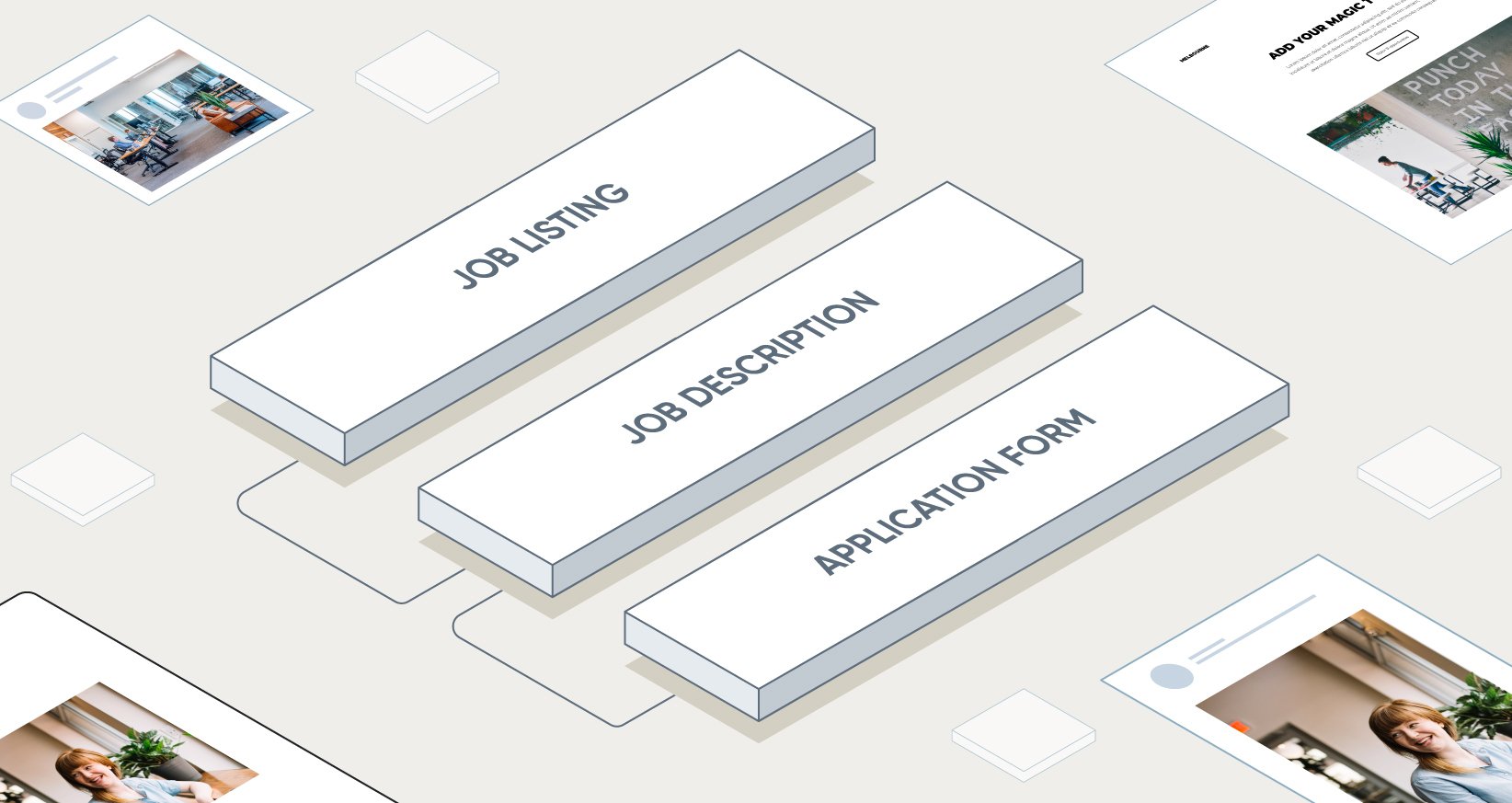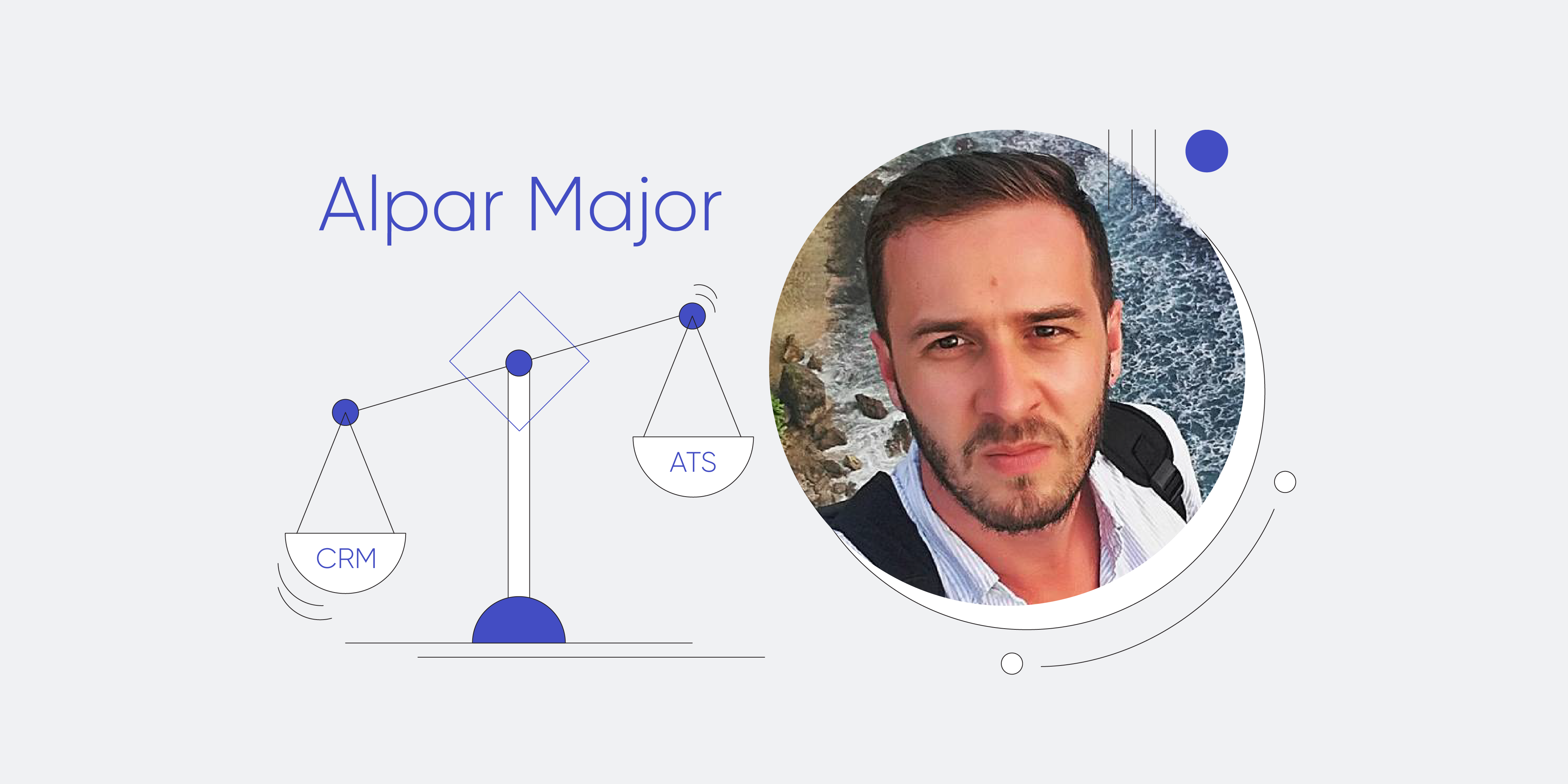Candidate journey, recruitment funnel, applicant funnel, talent acquisition funnel...so many trips and funnels it can be hard to keep them all straight, let alone know which to focus your attention and energy on.
While the topic of all these funnels and journeys is more than enough subject matter for a lengthy book, today we’re focusing on one and how to go about tracking your candidates as the make their way from first-time reader to happy new hire.
The talent acquisition funnel, and it’s associated touch points, will be our focus as it covers the most territory and encompasses the majority of the candidate's journey along the way. This journey can be long, with multiple detours, sidetracks, and even some backtracking. Or it can be short and to the point, with only a few days, or even hours, from first contact to submitted application.
The journey does not, however, have to be arduous. The trick is having the details you need so you can adjust your campaigns and touch points accordingly.
As many as 60% of candidates report having a negative candidate experience.
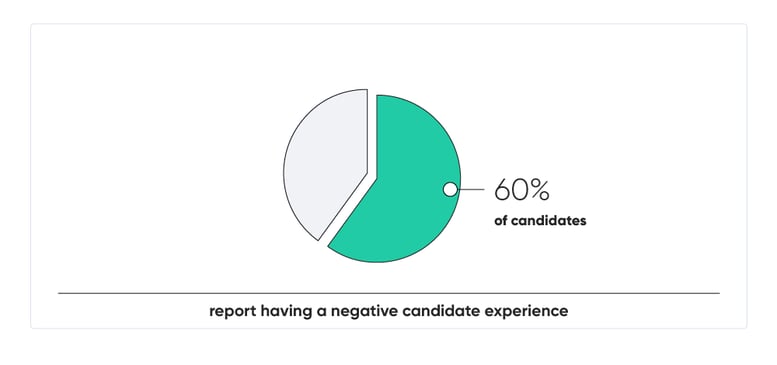
And in today’s candidate-centric job market, that’s not OK.
The experience a person has interacting with your social media presence in the days, weeks, or months leading up to application matters just as much as their experience after that application is in and they’re playing the waiting game.
And it’s on you as the talent acquisition professional to ensure their entire journey is a good one, end-to-end down the talent acquisition funnel.
But How?
Start By Mapping Your Candidate Journey Touch Points
This may seem counterintuitive at first blush, however, knowing where you’re starting from is crucial to constructing the funnel, and by extension, the journey you want for your candidates. Start with a blackboard, corkboard, whiteboard, stack of notecards, or mind mapping software.
1. Where is a person most likely to encounter your company for the first time?
- Social media
- Blog
- Glassdoor (or other review sites)
- Referral from existing employee
There will be differences in candidate quality from source to source, but for now you need a handle on ALL of the sources.
2. Now ask follow up questions (second interaction)
- Are they a regular follower of your Twitter account?
- Do they interact by commenting on your Facebook updates?
- Have they visited your career portal repeatedly looking for an opportunity that fits their skill set?
Each of these is a touch point and should be included in your brainstorming at this stage. Whether a potential candidate found your Instagram account on the suggestion of a friend, or through their own research, once they’re there you’ve got to work to keep them engaged if you want them to ultimately apply.
And the touch points don’t stop there.
3. Once an application is submitted
- Are you sending regular update emails to keep them informed of their status?
- How about general company info emails?
- Or even team specific ones, based on the role they applied to?
All of these are possible with appropriate TA automation solutions.
4. From there, the talent acquisition funnel moves on through the interview cycle and new hire onboarding.
It doesn’t end until the person is firmly in-seat and working as an integral part of their team.
This is, of course, a vastly generalized idea of the TA funnel, your mileage will vary. And don’t forget, a reasonable percentage of people will loop back and repeat stages along the way.
That’s not something to be concerned about, it’s something to stay aware of so you can adjust those touch points as necessary to maintain the relationship and keep the person engaged.
Map Those Touch Points to your Talent Acquisition Funnel
The basic stages of the TA funnel should be familiar to you already, it mirrors the larger recruiting funnel:
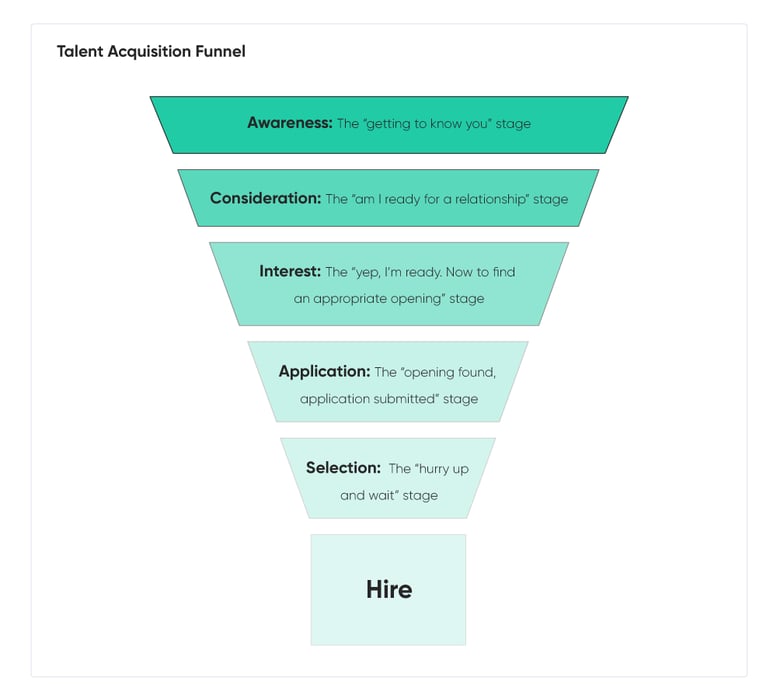
You probably recognize the first 3 funnel stages, as the also match up to the recruitment marketing funnel, while the remaining 3 make up the applicant funnel and are the purview of HR in a more general sense.
It’s important to do your due diligence at this point in the mapping project, remember those loops we discussed. You may find that the same touchpoint may map to Awareness and Consideration so be sure your documentation reflects this.
We can’t tell you how this mapping will look, as there is simply too much variation in journey touch points from one company to the next. What we can offer is a couple of guidelines to bear in mind as you go:
- First, remember that the first 3 funnel stages are pre-application, so the focus will be on your recruitment marketing efforts, social media presence, and the interactions you have with potential candidates throughout these efforts.
- From there, the final three will fall into the realm of your ATS and the communications you engage in during the application process. This includes the application process itself, follow up emails, the actual interview cycle, and any automated messages you send and chatbot sessions the applicant has to get answers to their questions.
And Finally, Know Your Metrics
And now for the meat of our discussion—how to actually measure this funnel activity and the impact of your touch points on it. This is an area where a lot of TA pros tend to put all of their focus, often to the detriment of the actual processes and interactions meant to be measured. The reason this is but one of three sections of today’s post is to highlight the fact that while metrics and KPIs are important, they are just one of the pieces of the puzzle.
Another note before we jump in: there’s a lot of wiggle room here. As stated above, every company is a unique entity and needs to be treated as such. In addition, every candidate is unique unto themselves, and in order to reflect all this uniqueness in something as seemingly academic as a metric can present problems. Therefore, what follows is a discussion of groups, or types of metrics that we recommend using when tracking your TA funnel. We trust you to know your company, candidates, and processes better than we do and to make appropriate selections that will tell you what you need to know.
All that said, let’s go stage by stage:
Awareness
- Simple page view numbers will tell you how many eyeballs your content is reaching
- From there, look at a combination of click-throughs and conversions to get a better handle on which pages are working better than others
Consideration
- Start with the same conversion numbers mentioned above
- The more downloads of gated content, the better, as each download will net you a lead conversion
- Social media follower counts can tell you a lot about who’s watching your presence, using the built in analytics dashboards on most platforms is enough to get you started
Interest
- Page views of specific openings, Facebook click throughs to those pages, and job board analytics for each individual posting
- Interactions with social accounts can tell you HOW interested a potential candidate is
- Chatbot conversations, email inquiries, and Twitter mentions
Application
- Number of applications submitted, segmented by whatever factors you’re watching
- Go deeper and look at where each application submitter came from for a more complete look at campaign success
- Be sure you have a way to count dropped apps, these are crucial in working out how to improve the application process as a whole
Selection
- Read counts on your followup and update emails
- Time spent in this stage, and attrition rates will show you if you’re making people wait so long that they accept a competing offer
Hire
- Numbers of non-selected applicants who are stored in your CMS so you can continue engaging with them to keep their interest high
- Feedback rates on the questionnaire you send all new hires, not only a great way to continue the HR engagement but also a rich source of information on the journey these folks just completed
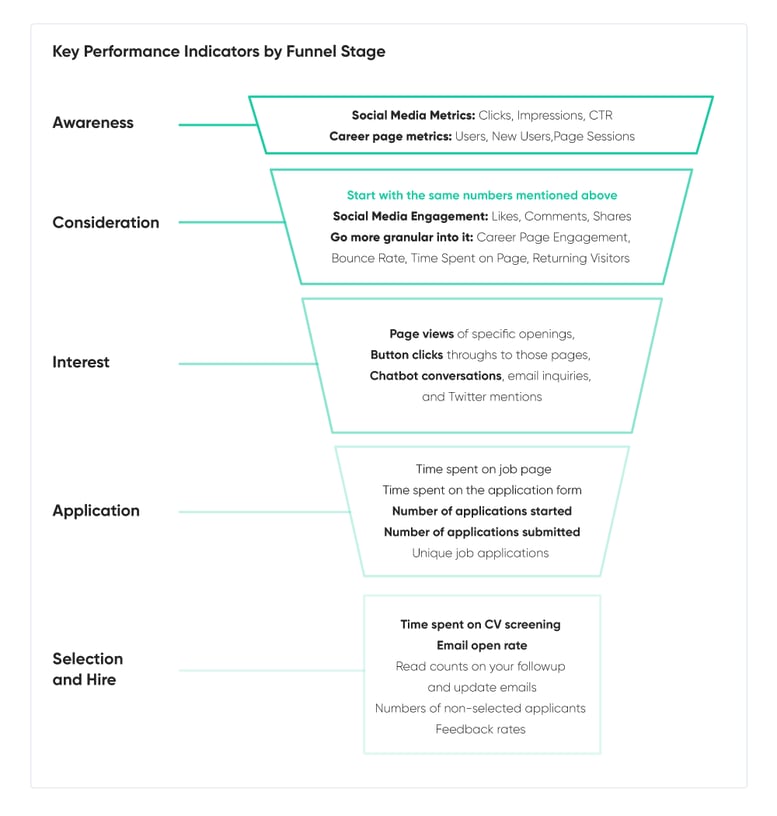
The candidate journey through your talent acquisition funnel need not be arduous, even if it ends up being long. The more relevant metrics you collect, and the more appropriate tweaks and adjustments you make to your touch points, the happier your candidates will be. Tracking their journey from initial contact via your social media presence, through the actual application process, the interview cycle, and new hire orientation—it’s your job as the TA professional to keep engagement high and to continually delight your candidates and applicants throughout their journey down the talent acquisition funnel.





